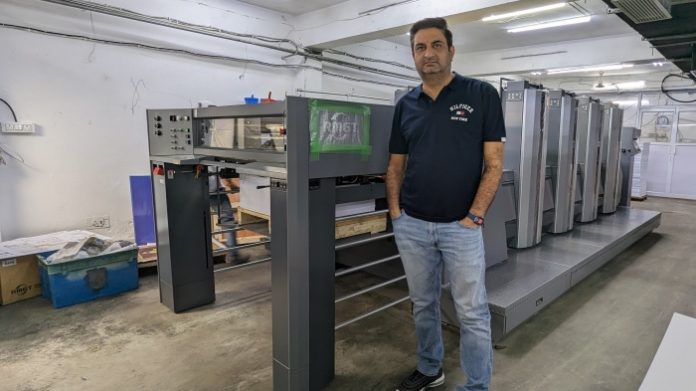Microprints India, a commercial and book printer based in the Okhla industrial area in New Delhi has just installed a new RMGT 920ST 4-color sheetfed offset press. With several second-hand presses running in the plant, the RMGT 4-color is the company’s first investment in a brand-new press. Started in 2004 with the ambition to work for all segments including commercial, books, and packaging print, the company eventually decided to focus on commercial and book printing.
The new 4-color press has a rated maximum speed of 16,200 sheets an hour and a plate size of 665 x 910 mm. Microprints’ managing director Varun Johar, believes that the format is just right for his needs and especially appropriate for quickly turning around short-run work. “Sitting in a place like Okhla, Delhi, which is a competitive market, the plate size, print area, and the space taken by the machine all matter, and RMGT 920ST-4 satisfies these requirements best for our purpose,” said Johar. Talking about the intensely competitive printing market he says, “Market is going big but print runs are going down. Book publishers don’t want to order longer print runs, and they would rather be cautious and settle for print runs in the mid-range segment.”
Teaching and schools return to printed textbooks
In our conversation at the plant, Johar expressed the view that general commercial printing such as advertising collateral and product brochures and price lists is steadily declining as promotional and commercial information are increasingly being presented on digital media and channels. However, he projects optimism in the recovery of book printing including school and college textbooks where the number of titles and print runs are increasing.
Expressing an opinion that seems to be widespread across the country and shared by publishers at recent book fairs in the Americas and Europe, he attributes this robust return of demand for book printing to the shortcomings found in some of the digital edutech systems, that seemed to take off in the lockdowns caused by the Covid-19 pandemic. He says the smart education systems in schools, that initially promised to transform learning methods have largely failed – and teaching has come back to traditional methods through printed textbooks.
Nevertheless, Johar is both cautious and sensitive to the changes and possibilities in cultural and technical trends. Discussing the future of the printing industry, he believes the trends tend to change every 10 to 20 years. “You never know, maybe 20 years down the line, commercial printing may see a resurgence.”
As far as print and book production, he believes quality to be of the utmost importance, which is what most printers can provide but what we see as giving us the edge, is our speed of delivery and our commitment. “Quality is something that needs to be consistent,” he says, adding, “In addition, we are very committed to keeping our commitments.”
While he expresses his satisfaction with the installation and after-sales service provided by RMGT’s Indian distributor, he foresees the need for capacity addition in the future. He is looking forward to perhaps adding another multicolor book press in the coming two to three years.
















